Related Research Articles

The Basilica of Saint Praxedes, commonly known in Italian as Santa Prassede, is an early medieval titular church and minor basilica located near the papal basilica of Saint Mary Major, on Via di Santa Prassede, 9/a in rione Monti of Rome, Italy. The current Cardinal Priest of Titulus Sancta Praxedis is Paul Poupard.

Santa Cecilia in Trastevere is a 5th-century church in Rome, Italy, in the Trastevere rione, devoted to the Roman martyr Saint Cecilia.

San Marcello al Corso, a church in Rome, Italy, is a cardinalitial titular church whose cardinal-protector is normally of the order of cardinal priests.

The early Christian imperial basilica of the Saints Martyrs Vitale, Valeria, Gervasio and Protasio known more commonly as the basilica of San Vitale and Compagni Martiri in Fovea or more simply as San Vitale al Quirinale. It is the oldest Catholic place of worship in the historic center of Rome, located in via Nazionale. The imperial basilica of San Vitale al Quirinale, built under the pontificate of Pope Siricius after 386 and consecrated and richly decorated by Pope Innocent in 402 is the first public Christian basilica with a baptistery not founded on pre-existing pagan temples, mentioned in the Liber pontificalis, built by the Emperor Theodosius at the behest of Saint Ambrose of Milan, in honor of the miraculous discovery of the bodies of martyrs Gervasius and Protasius in Milan. It is the most frescoed basilica in Rome.

Sant'Eusebio is a titular church in Rome, devoted to Saint Eusebius of Rome, a 4th-century martyr, and built in the Esquilino rione. One of the oldest churches in Rome, it is a titular church and the station church for the Friday after the fourth Sunday in Lent.
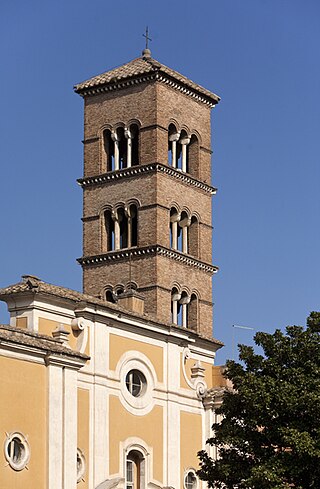
The Basilica of San Sisto Vecchio is one of the over sixty minor basilicas among the churches of Rome, and a titular church since 600 AD. As such, it is connected to the title of a Cardinal priest, currently Antoine Kambanda.

The Suburbicarian Diocese of Palestrina is a Latin suburbicarian diocese centered on the comune of Palestrina in Italy.

A crown-cardinal was a cardinal protector of a Roman Catholic nation, nominated or funded by a Catholic monarch to serve as their representative within the College of Cardinals and, on occasion, to exercise the right claimed by some monarchs to veto a candidate for election to the papacy. More generally, the term may refer to any cardinal significant as a secular statesman or elevated at the request of a monarch.
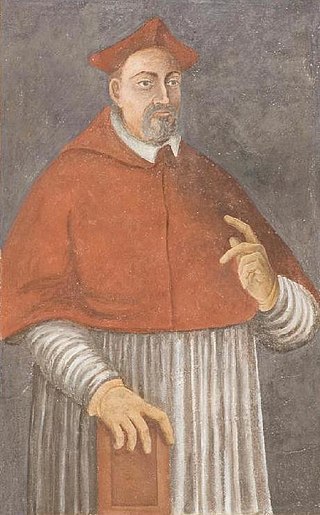
Francesco Pisani was an Italian Cardinal, born in Venice, the son of Alvise Pisani the noted banker, who was Procurator of S. Mark's, a member of the Council of Ten, and a Councilor of the Doge of Venice; and Cecilia Giustinian. He had a brother named Giovanni (Zuan), who also became Procurator of S. Marks' and was a Venetian diplomat; he was married to the sister of Doge Andrea Gritti. He was a strong supporter of the alliance between Venice, France and the Papacy, called the League of Cognac. He shared the imprisonment of Pope Clement VII in the Castel S. Angelo during the Sack of Rome and its aftermath. He spent eighteen months in exile in Naples while Clement made his peace with the Emperor Charles V.

The Archdiocese of Perugia-Città della Pieve is a Latin archdiocese of the Catholic Church. It was historically the Diocese of Perugia. It became the Archdiocese of Perugia in 1882, but without suffragans. It acquired suffragan dioceses in 1972. It was united in 1986 with the Diocese of Città della Pieve.

The 1534 papal conclave was convened after the death of Pope Clement VII, and elected as his successor Cardinal Alessandro Farnese, who became Pope Paul III.
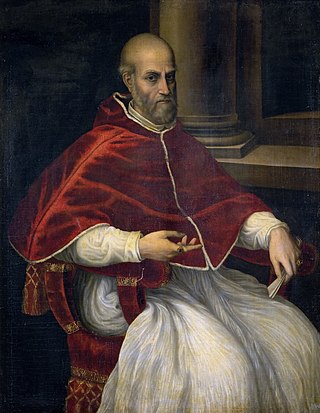
The April 1555 papal conclave was convoked after the death of Pope Julius III. Cardinals at the conclave generally grouped themselves into three major factions, according to their alignment with the French House of Valois, the Hapsburgs, or Italian states that remained independent of both major Catholic powers. After preparing a conclave capitulation that compelled whichever cardinal was elected pope to maintain neutrality in European wars, cardinals from the Holy Roman Empire joined in supporting the French faction's candidate, Cardinal Marcello Cervini. Cervini was elected Julius's successor, and chose to maintain his baptismal (birth) name as his papal name, becoming consecrated as Marcellus II.
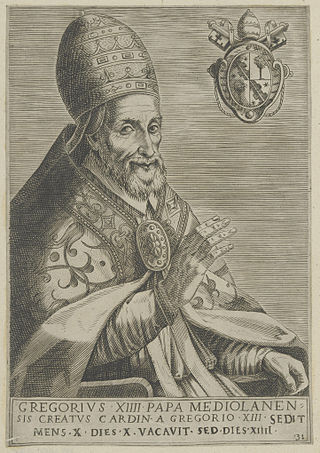
The October to December 1590 papal conclave was the second conclave of 1590, and the one during which Gregory XIV was elected as the successor of Urban VII. This conclave was marked by unprecedented royal interference from Philip II of Spain.

Pope Leo X created 42 new cardinals in eight consistories.
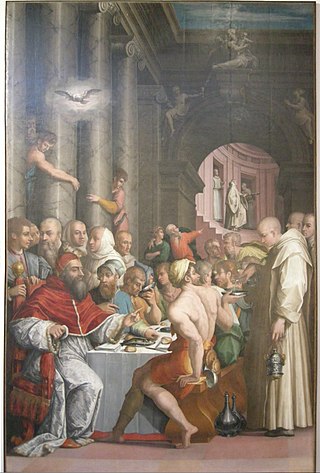
Pope Clement VII created 32 new cardinals:
Agostino Spinola was an Italian Roman Catholic bishop and cardinal.
Giacomo Simonetta (1475–1539) was an Italian Roman Catholic bishop and cardinal.
References
- ↑ S. Maria degli Angeli e dei Martiri website, Cardinalizio di S. Ciriaco alle Terme
- 1 2 3 4 5 Florida International University website, The Cardinals of the Holy Roman Church, Consistories for the creation of cardinals in the 12th Century (1099-1198)
- ↑ Fiariosforza Italy website, Agostino Spinola Riario
- ↑ California State University Northridge website, Sede Vacante 1534: September 25, 1534 - October 12, 1534